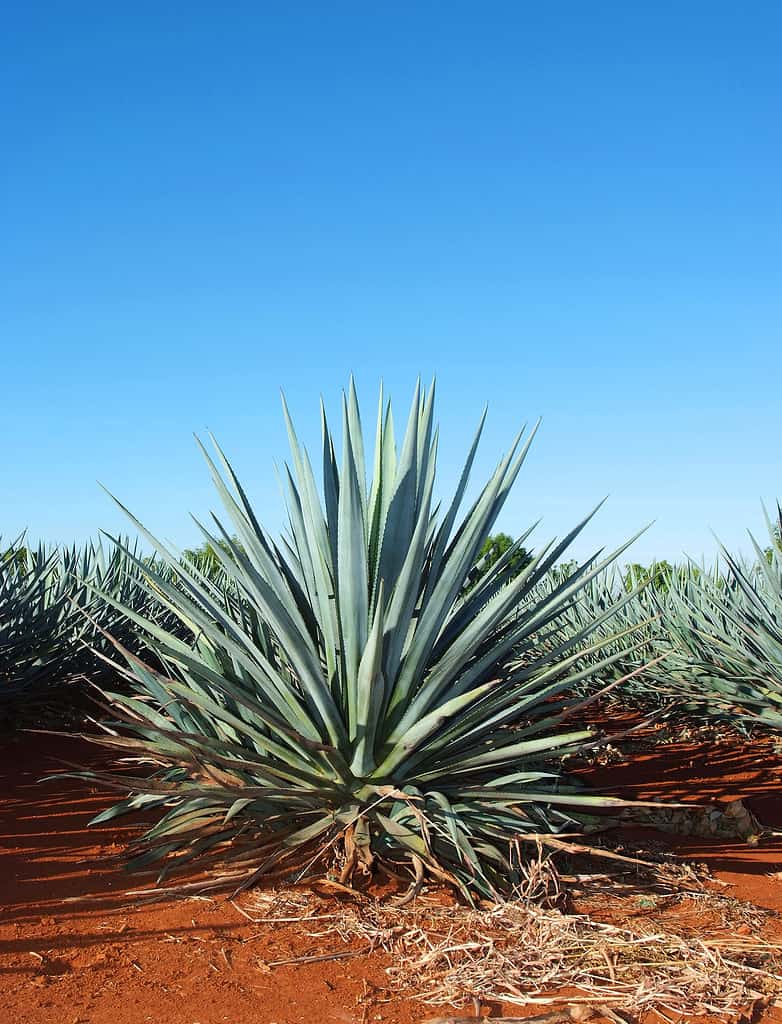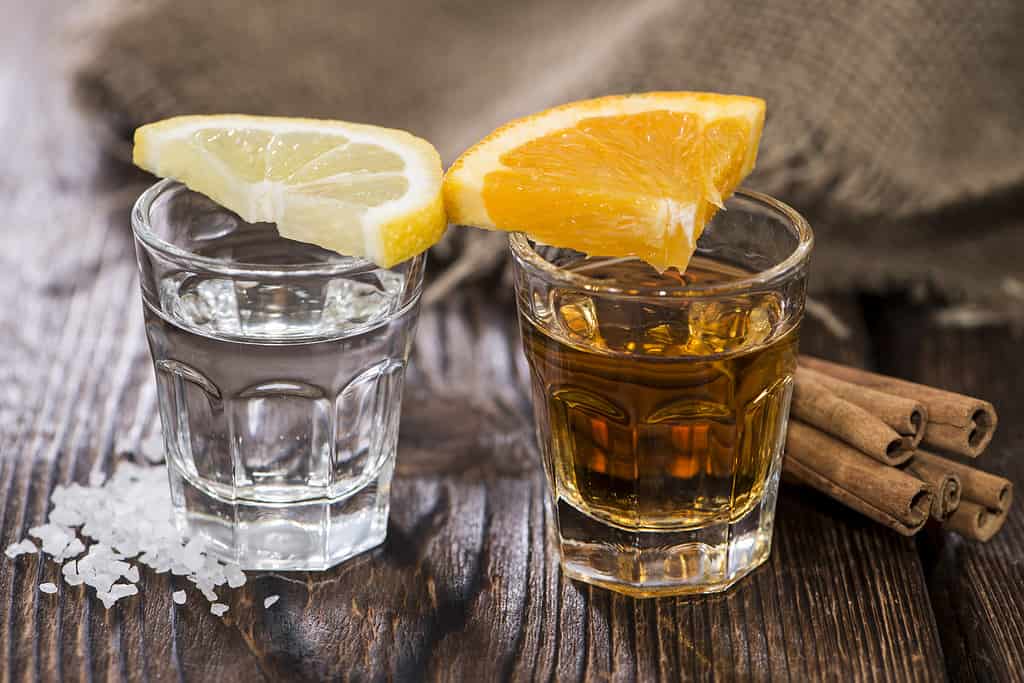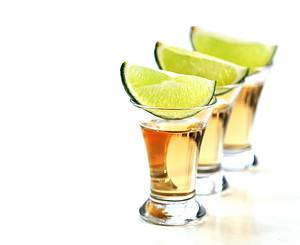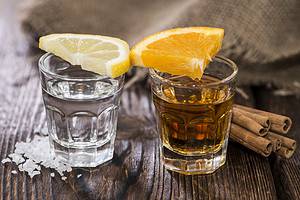Tequila is a popular alcoholic beverage that originated in Mexico. Made from the agave plant, it is known for its distinctive taste and is often consumed as a shot or mixed in a cocktail. There are several different types of tequila, each with their own unique flavor and characteristics.
The main types of tequila are blanco, reposado, and añejo. Blanco tequila, also known as silver or white tequila, is clear and unaged, with a strong taste of agave. Reposado tequila is aged for at least two months but less than a year, giving it a smoother taste and subtle hints of oak. Añejo tequila is aged for at least one year, resulting in a darker color and a complex, smooth flavor with notes of vanilla and caramel. In addition to these main types, there are also extra añejo tequilas that are aged for three years or more, and joven or gold tequilas that are a blend of blanco and reposado tequilas. Understanding the different types of tequila can help you choose the right one for your taste preferences and cocktails.
Table of Contents
Understanding Tequila
Blue Agave Plant
Tequila is a distilled alcoholic beverage made primarily from the blue agave plant, which is native to Mexico. The plant is a succulent that grows in the Jalisco region of Mexico and takes around 8-12 years to mature before it can be harvested. The blue agave plant is known for its large, spiky leaves and its ability to resist drought conditions.
The heart of the blue agave plant, also known as the piña, is the part used to make tequila. After harvesting, the piñas are cooked to break down the complex sugars into simple sugars, which can be fermented. The cooked piñas are then crushed to extract the juice, which is then fermented and distilled to produce tequila.

Tequila Regulatory Council
The Tequila Regulatory Council (CRT) is a Mexican government agency that oversees the production and regulation of tequila. The CRT was established in 1994 and is responsible for ensuring that tequila is made according to strict standards.
To be classified as tequila, the beverage must be made from at least 51% blue agave. The remaining 49% can be made up of other sugars, such as cane sugar. Tequila must also be produced in specific regions of Mexico, including Jalisco, Guanajuato, Michoacán, Nayarit, and Tamaulipas.
There are several types of tequila, including blanco (unaged), reposado (aged for at least two months), añejo (aged for at least one year), and extra añejo (aged for at least three years). Each type has its own unique flavor profile and is best enjoyed in different ways.
Overall, understanding the blue agave plant and the role of the Tequila Regulatory Council is essential for anyone looking to appreciate and enjoy tequila.
Types of Tequila
Tequila is a popular spirit that is made from the blue agave plant. There are different types of tequila available in the market, each with its own unique taste and characteristics.
Blanco Tequila
Blanco tequila is also known as silver or white tequila. It is clear and unaged, and it is bottled immediately after distillation. Blanco tequila has a strong agave taste and is often used in cocktails.

Reposado Tequila
Reposado tequila is aged for a minimum of two months and up to a year in oak barrels. The aging process gives it a golden color and a smoother taste than blanco tequila. Reposado tequila is often sipped straight or used in cocktails.
Anejo Tequila
Anejo tequila is aged for a minimum of one year and up to three years in oak barrels. It has a darker color and a smoother taste than reposado tequila. Anejo tequila is often sipped straight and is considered a premium tequila.
Extra Anejo Tequila
Extra Anejo tequila is aged for a minimum of three years in oak barrels. It has a dark color and a complex taste with notes of vanilla, caramel, and oak. Extra Anejo tequila is the most expensive and premium type of tequila.
Joven Tequila
Joven tequila is a blend of blanco and reposado tequila. It has a golden color and a smooth taste with a hint of agave. Joven tequila is often used in cocktails.
Gold Tequila
Gold tequila is a blend of blanco and reposado tequila with added caramel or food coloring. It has a golden color and a smoother taste than blanco tequila. Gold tequila is often used in cocktails.
Mixto Tequila
Mixto tequila is made from a minimum of 51% blue agave and the rest from other sugars such as cane sugar. Mixto tequila has a lower quality than 100% blue agave tequila and is often used in cocktails.
Silver Tequila
Silver tequila is another name for blanco tequila. It is clear and unaged and has a strong agave taste. Silver tequila is often used in cocktails.
In conclusion, there are different types of tequila available in the market, each with its own unique taste and characteristics. Choosing the right tequila depends on personal preference and the occasion.
Aging Process of Tequila
Tequila is a distilled spirit that is made from the blue agave plant. The aging process of tequila is what gives the spirit its unique flavor and character. There are three types of tequila: unaged, aged, and extra-aged.
Unaged Tequila
Unaged tequila, also known as blanco or silver tequila, is bottled immediately after distillation. It has a clear color and a strong, pure agave flavor. This type of tequila is typically used for mixed drinks, as it has a bold flavor that can stand up to other ingredients.
Aging Process
Aging tequila is a process that involves storing the spirit in oak barrels. The type of barrel used and the length of time the tequila is aged can greatly impact its flavor and character. The three types of aging are:
- Reposado: Aged for a minimum of two months, reposado tequila has a light golden color and a smooth, mellow flavor. It is aged in oak barrels that have been used for other spirits, such as bourbon or whiskey.
- Añejo: Aged for a minimum of one year, añejo tequila has a darker color and a more complex flavor than reposado. It is aged in new oak barrels, which gives it a distinct woody flavor.
- Extra Añejo: Aged for a minimum of three years, extra añejo tequila is the most aged and expensive type of tequila. It has a dark amber color and a rich, complex flavor that is often compared to fine cognac.
Extra Aged Tequila
Extra-aged tequila is a relatively new category that was introduced in 2006. This type of tequila is aged for a minimum of three years but can be aged for much longer. It has a deep, complex flavor that is often compared to a fine single malt scotch.
In conclusion, the aging process of tequila is what gives the spirit its unique flavor and character. Whether you prefer unaged tequila, reposado, añejo, or extra añejo, there is a tequila out there that will suit your taste.

Quality and Purity
Purest Form
Tequila is made from the blue agave plant, which is native to Mexico. To be considered tequila, the spirit must be made from at least 51% blue agave. However, the purest form of tequila is made from 100% blue agave. This type of tequila is called “tequila de agave” or “100% agave tequila.” It is considered to be the highest quality tequila because it contains no other sugars or additives.
The production process for 100% agave tequila is highly regulated by the Mexican government. The agave plants are harvested and the leaves are stripped away, leaving only the heart of the plant, called the “piña.” The piñas are then cooked in ovens or autoclaves to break down the complex sugars into simple sugars. The juice is then extracted and fermented before being distilled twice.
Premium Tequila
Premium tequila is made from a blend of 100% agave tequila and other sugars, such as cane sugar or corn syrup. The Mexican government also regulates this type of tequila and must contain at least 51% blue agave. However, premium tequila is considered to be of higher quality than regular tequila because it contains a higher percentage of agave.
Premium tequila is often aged in oak barrels, which gives it a more complex flavor and aroma. The longer the tequila is aged, the darker in color it becomes. Aged tequilas can be classified as “reposado” (aged for at least two months but less than a year), “añejo” (aged for at least one year but less than three years), or “extra añejo” (aged for at least three years).
In conclusion, the purest form of tequila is made from 100% blue agave and is considered to be of the highest quality. Premium tequila is also of high quality and is made from a blend of 100% agave tequila and other sugars. The production process and aging of tequila can greatly affect its flavor and aroma.
Popular Brands
Tequila is a popular spirit that is enjoyed by many around the world. There are several brands of tequila available in the market, each with its unique taste and quality. Some of the popular brands of tequila are:
Don Julio
Don Julio is a premium tequila brand that was founded in 1942 by Don Julio González. The brand is known for its high-quality tequila, which is made using 100% blue agave. Don Julio tequila is made using traditional methods, which involve slow cooking the agave in clay ovens and then fermenting it in wooden tanks.
Don Julio offers a range of tequilas, including Blanco, Reposado, Añejo, and 1942. The Blanco is unaged and has a crisp, clean taste, while the Reposado is aged for eight months in oak barrels and has a smooth, mellow taste. The Añejo is aged for 18 months in oak barrels and has a rich, complex taste, while the 1942 is aged for two and a half years and has a smooth, silky taste.
Don Julio tequilas have won several awards for their quality and taste, including the Double Gold Medal at the San Francisco World Spirits Competition. Don Julio is a popular brand among tequila connoisseurs and is often served at high-end bars and restaurants.
In conclusion, Don Julio is a premium tequila brand that offers high-quality tequilas with a range of tastes and flavors. Whether you prefer a crisp, clean taste or a rich, complex taste, Don Julio has a tequila for you.
Tequila in Cocktails
Tequila is a versatile spirit that can be used in a variety of cocktails. Its unique flavor profile makes it a great choice for mixing with other ingredients to create delicious and refreshing drinks. In this section, we will explore one of the most popular tequila cocktails – the Tequila Sunrise.
Tequila Sunrise
The Tequila Sunrise is a classic cocktail that has been around since the 1930s. It is a simple cocktail that combines tequila, orange juice, and grenadine syrup. The drink is named after its beautiful appearance, which resembles a sunrise.
To make a Tequila Sunrise, you will need the following ingredients:
- 2 oz. tequila
- 4 oz. orange juice
- 1/2 oz. grenadine syrup
- Ice
- Orange slice and cherry for garnish
To prepare the cocktail, fill a glass with ice and add the tequila and orange juice. Stir well to combine. Slowly pour the grenadine syrup over the back of a spoon so that it sinks to the bottom of the glass. Garnish with an orange slice and cherry.
The Tequila Sunrise is a refreshing and easy-to-make cocktail that is perfect for any occasion. It is a great choice for a brunch or a summer party, and is sure to impress your guests.
Overall, tequila is a great spirit to use in cocktails, and the Tequila Sunrise is just one example of how versatile it can be. Whether you prefer your tequila straight up or mixed in a cocktail, there are many options to choose from.
Understanding Additives
Tequila is a unique and complex spirit that is distilled from the blue agave plant. While it is often enjoyed straight up or in a margarita, many people do not realize that there are different types of tequila that can be made with various additives. Understanding these additives can help you choose the right tequila for your taste preferences.
Caramel Coloring
Caramel coloring is a common additive in tequila that is used to achieve a consistent color. This coloring is made by heating sugar until it caramelizes and then adding water to create a liquid. The resulting caramel coloring is then added to the tequila to achieve a consistent color.
While caramel coloring is generally considered safe for consumption, some people may be sensitive to it and experience allergic reactions. Additionally, some tequila purists argue that caramel coloring alters the taste of the tequila and should not be used.
It is important to note that caramel coloring is not the same as caramel flavoring, which is a separate additive that is used to add flavor to tequila. Caramel flavoring is made by combining sugar with other ingredients, such as vanilla or cinnamon, and then adding it to the tequila.
In summary, caramel coloring is a common additive in tequila that is used to achieve a consistent color. While generally considered safe, some people may be sensitive to it and some tequila purists argue against its use.

Choosing the Best Tequila
When it comes to choosing the best tequila, there are a few things to keep in mind. First and foremost, it’s important to know the different types of tequila and what sets them apart. Tequila is divided into two main categories: 100% agave and mixto. 100% agave tequila is made solely from the agave plant, while mixto tequila is made from a combination of agave and other sugars.
For those looking for the best quality and taste, 100% agave tequila is the way to go. It’s important to read the label carefully to ensure that it is indeed 100% agave and not a mixto. Additionally, it’s important to consider the aging process. Tequila can be aged in oak barrels for varying lengths of time, which affects its flavor and color.
Another factor to consider when choosing the best tequila is the brand. Some of the most well-known and respected tequila brands include Patrón, Don Julio, and Casa Noble. However, there are many other lesser-known brands that produce high-quality tequila as well. It’s important to do research and read reviews to find the best brand for your preferences and budget.
Lastly, it’s important to consider the occasion. Blanco tequila is best for cocktails, while reposado and añejo tequilas are better for sipping and enjoying on their own.
Overall, choosing the best tequila comes down to personal preference and taste. By understanding the different types of tequila, considering the aging process and brand, and keeping the occasion in mind, anyone can find the perfect tequila for their needs.






